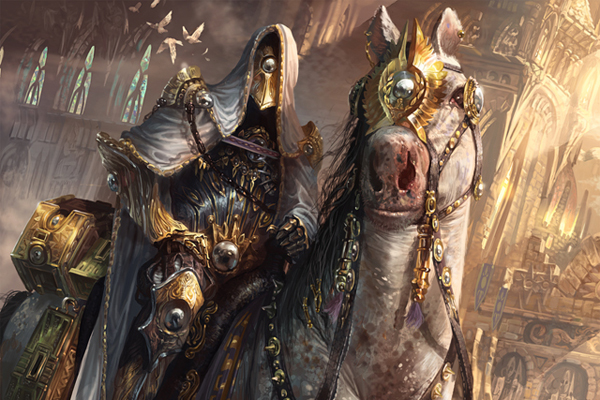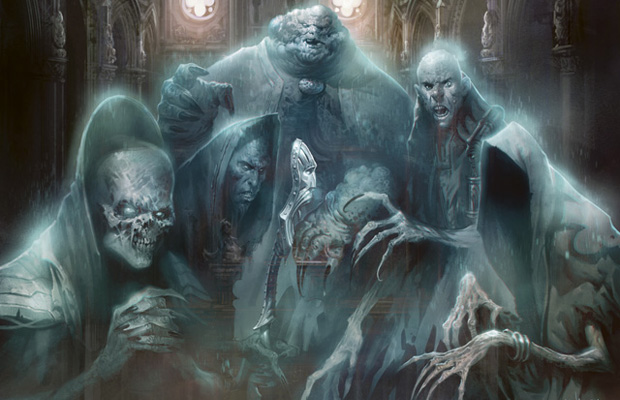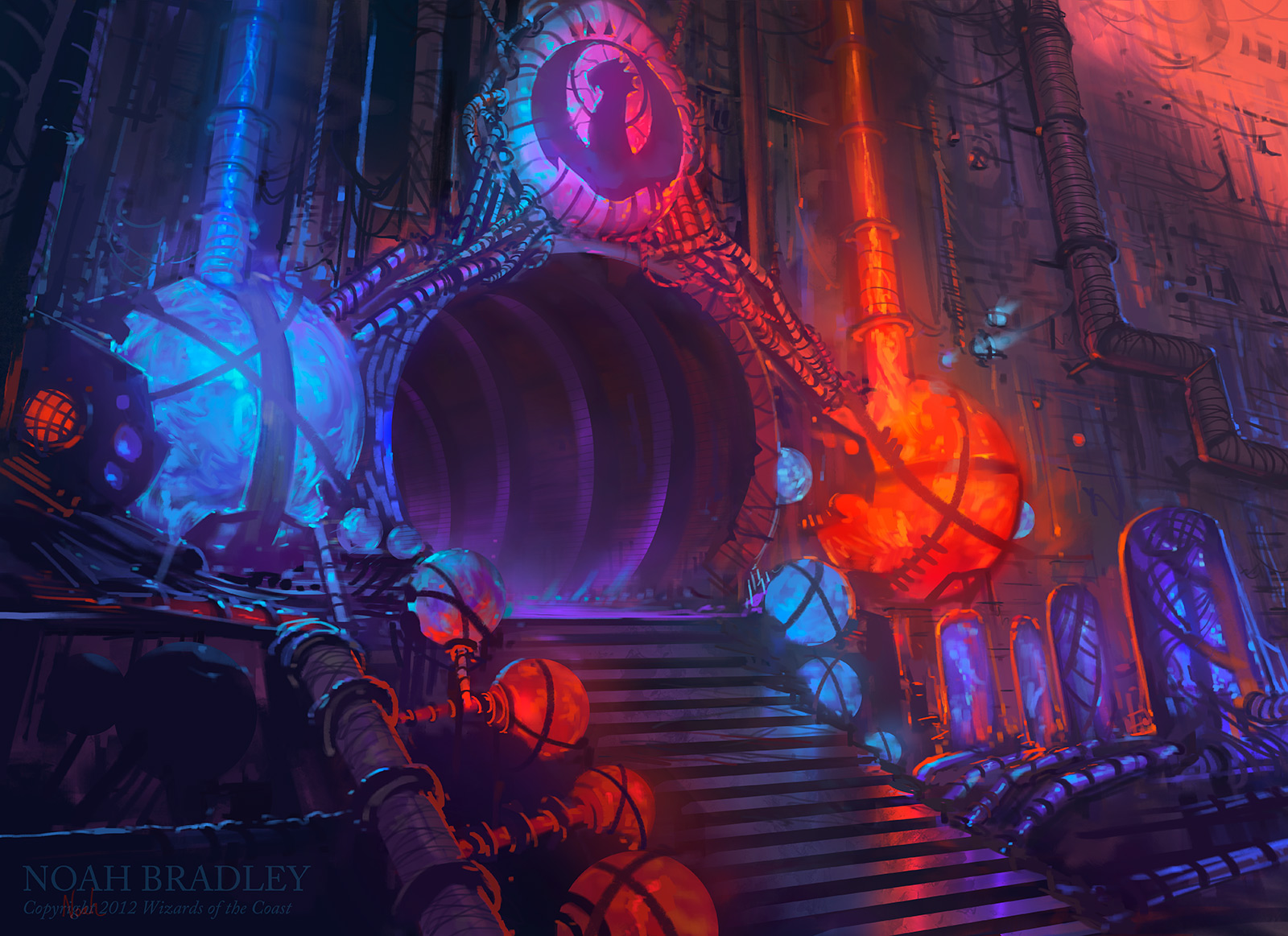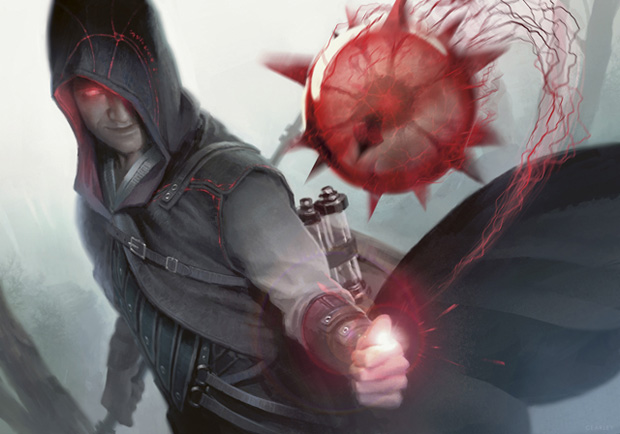By: Travis Allen
You know the guy. There’s always one or two that float around a local community. Even if they’re likely to have the card you need it’s easier to just not trade for it. So unpleasant is the trading experience that when faced with trading with this person or not having the 75th card you need, you go ask your friends what you should run in that slot instead. From start to finish the process is agonizing, uncomfortable, frustrating, and almost always expensive. There’s no doubt the guy has one of the best binders in the room. The problem is that his method of getting there makes him the scummiest guy you know.
Don’t be a shark.
Trading as a spike is 100% totally acceptable. Go for it. Be competitive. Want to have the best binder and collection of anyone you know. Ask every person in the room if they want to trade. All of that is totally fine. Just be ethical about it. Grind towards the best binder within the rules of the social construct. Once you step outside acceptable civilized behavior at the trade table you become that which gives us all a bad name: a shark.
A shark is one who engages in trade practices that are considered unethical. I’m not going to debate the philosophy of ethics and morality because several thousand years after first discussing it we still don’t have a universal answer. We’ll simply use the gold standard: do unto others as you would have them do unto you. If you wouldn’t want someone to do that while you’re trading, then don’t do it to them.
Any self-aware trader will have times they’ve wondered if they were crossing a line and sharking someone. My plan today is to create a (non-exhaustive) list of activities that will flag you as a shark. Some of these you may have done before, some you may in fact still do. So long as you’re willing to reform we can forgive past transgressions.
Don’t Lie
This one seems like it should be pretty straightforward. Don’t lie to people. Here’s the most common way this comes up:
Them: “Sure, my Courser is for trade. What’s it worth now?”
*Liar knows that the card is on SCG for $15*
Liar: “I think it’s about six dollars.”
Them. “Ok that sounds good.”
The temptation to do this is greatest right after a card sees a huge spike. Ensnaring Bridge is $5 and then someone wins a Legacy event with the card and it sells out overnight. You’re flipping through someone’s binder hoping to pick them up cheap because you doubt anyone in your local shop has figured it out yet. There’s a Stronghold copy tucked in with some Scars of Mirrodin artifacts in a random trade binder and you pull it out of the sleeve, knowing full well this guy has no clue how much they are. He’s glad to trade it because nobody has touched it since he put it in there months ago. “Ensnaring Bridge is definitely for trade!” You’re cheering inside your head because you know you’re going to grab it real cheap then take it home and buylist it for $10. You each turn a few more pages when he asks. “Any idea what the Bridge is at?”
Here’s the opportunity. Right here is where it strikes. There’s nobody standing over your shoulder to call you out on lying. He certainly isn’t going to know. It just went up last night so there’s complete plausible deniability. Even if someone said something you could claim you had no idea. It’s easy money. Only you and God will know, and he isn’t going to interrupt the trade.
“The true test of a man’s character is what he does when no one is watching.”
There are right ways and wrong ways to handle those types of situations, and flat out lying to the other guy is most definitely the wrong way.
“What’s this worth?”
This is a game nobody enjoys. If you’ve ever traded at a GP you’ve definitely had to go through this before. You sit down, swap binders, and suddenly you’re in the middle of a pop quiz. He points to a Vraska. “What’s this worth?” It turns out that from where you’re sitting there is actually no right answer.
Let’s say Vraska is worth $5. (Whatever that means.) If you say three or four bucks he’s going to pull it out. If you say $5 or more, he leaves it in the binder and keeps going. The only time the shark takes a card out of your binder is if you think it’s worth less than it actually is. He isn’t looking for any particular card he needs for an EDH or Legacy deck. His goal is only to pit his encyclopedic knowledge of card prices against yours and take any card that you improperly value as too cheap. Each time he slides a card out of your binder after you give him a number you know you messed up. By the time he’s done, each card removed says “you done goofed.”
The common reason for this game is that the victim wants some cards from the shark, but the shark wants nothing in particular from the victim. He then switches into value mode, looking to take near anything that will increase the value of his binder a few bucks. The resulting behavior will alienate your trade partner with astounding swiftness. They’ll feel terrible, they won’t want to trade with you again, and anyone watching will similarly be turned off to trading with you. Plus it makes you a jerk.
When you find yourself in the situation of needing to find cards to trade for and they have nothing you personally want, set your sights on items of high liquidity. Even though they’re nothing you need in particular you can still flip these types of cards easily and there’s always room to haggle some value out of the deal once each party has their options laid out on the table.
Keep Things Reasonably Fair
For most of us the goal when trading is to make value every time. We’re all on the same page on that. And that’s fine. Making a few bucks or a reasonable percentage gain on each trade is the payoff you get for having a large, well-stocked binder and better market knowledge than the next dude. The other guy gives up a little value in exchange for a wide selection.
The issue comes up when that value you’re grinding is less of a grind and more of a smash-and-grab. What do I mean?
Trade A
Your: $1 card
His: $3 card
Ok
Trade B
Your: $100 worth of cards
His: $130 worth of cards
Ok
Trade C
Your: $8 worth of cards
His: $56 worth of cards
Not Ok!
In Trade A you’re getting 300% but it’s only an absolute net gain of $2. While the percentage is high, the actual dollar value is low. I’ve been on both sides of this trade many times. Often the guy with the $3 card is well aware of what’s going on but he really needs that $1 card so he’s fine with it.
In Trade B you’ve made $30, but you’re seeing only a 30% increase. That’s a healthy profit margin for sure but it’s not something you need to feel bad about. If that $100 is a dual land and the $130 is all Master of Waves and Brimazs, the other guy is probably fine with what’s going on. Regardless of whether or not your trade partner is aware of the difference in the value nobody is going to think poorly of you here. Even if it’s not a dual land and it’s just two piles of Standard cards there is no abuse occurring.
Trade C is where there is an issue. You’re making $48, which is a good chunk of change but not unreasonable when the trade piles are several hundred on each side. The real problem is that his pile of cards is worth 700% of yours. This is a situation where clearly the other guy in the trade doesn’t know something you do, and you’re taking him to the cleaners for it. Making profit on someone else’s lack of information or knowledge is fine, but something this severe is very much pushing the boundary of what is acceptable behavior. You could easily cut his pile down to $30 or bring yours up to $25 and still make a healthy profit without being the sleaziest guy in the room.
There’s no algorithm or clear line that establishes exactly when a difference in piles is too great. You have to do it by how it feels. A good rule of thumb is to consider how willing you would be to tell others about the trade afterwards. When considering how much profit is too much, ask yourself if you would feel comfortable telling your friends and peers about the trade. Would they pat you on the back for a good trade, or would they tell you it was a crummy thing to do to someone?
I’m aware that there are economic lessons that would tell you that any trade you can arrange is an acceptable trade, and that if the other guy is unwittingly taking that much of a loss it isn’t your problem. I’m not going to discuss economic theory here. Instead I’ll point out that when you’re trading locally it isn’t some theoretical market with no faces and no repercussions. These are local players that are needed to support a community. If you and a few other people start dragging huge gains out of the binders of the naive, pretty soon there won’t be enough people left to support your FNMs. Think “sustainable farming,” not “scorched earth.”
Leave Minors Alone
Do you remember being thirteen, fifteen, or seventeen? Do you remember having no money? I can recall not wanting to spend a dollar on a McDonald’s burger when I was in my teens. Kids in general are poor. While it’s easy for many of us to look at a card and go “it’s a few bucks,” to some fourteen-year-old kids there’s a big difference between $.80, $1.70 and $2.65.
Young kids don’t necessarily have regular access to smartphones or internet access so the knowledge playing field isn’t fair at all. It is super scummy to punish a kid in trade because his parents don’t have the resources to provide him with regular access that you have.
I don’t really feel like I need to discuss why raking kids over the coals is a crummy thing to do. There’s a reason minors are protected under so many state laws.
When a kid’s collection is meager at best and format rotations can knock 85% of the value out of his entire collection, there’s no need to scrape a few extra bucks off him in trade. In fact, you should be trying to help establish their collection, not gut it. Instead of grinding value on minors look to give them just a bit more than you’re getting back. You don’t have to feel bad about trading for a pair of Thassas, just leave him with a Courser of Kruphix or another solid $15-17 in product.
Once you accept that trying to value trade kids is a bad idea, there’s two more groups you should include in your ‘protected’ status: the mentally challenged and those that are in noticeably worse socio-economic standings than you are. There are plenty of enfranchised individuals at the trade tables to make money on. Don’t do it to those that don’t have the wherewithal to handle themselves appropriately or those that look like they have pretty poor financial outlooks. Remember, you’re part of a community. Treat it as such.
“Oh I’ve got a set of those too.”
You’re trading with a guy who has a foil Temple of Malady you really would like. He asks if you have any Kioras. You inform him that you don’t, and he starts to look back through the binder. A bystander overhears and chimes in. “I’ve got some Kioras and I’d like your foil Temple too.” The guy with the Temple pushes your binder back at you and starts trading with the third dude.
That third dude is clueless at best and a total jerk at worst.
If two people are trading leave them alone. Here’s some things you should not do as a bystander:
- Offer unsolicited information about card pricing
- Make suggestions on what is/is not good to trade for
- Say things like “Man did you see how expensive that got recently?”
- Wonder aloud why someone is trading for such a bad/useless card
- Tell someone that you too have a card that the other guy may or may not have and that you’ll gladly trade it
- Comment on whether a trade is good/bad
I know a guy that does literally all of these, and if you’ve traded at more than one or two major events in the North East in the last two years chances are you do too. He’s typically a nice guy but I want him nowhere near me when I’m trading because any of those comments, offered unsolicited, is infuriating.
There is a right time to chime in and it’s typically after the trade is over. If someone is looking for Kioras, feel free to tell him you have some – after he’s finished with his current trade. If your buddy is picking up an odd card, question him about it once he’s away from the trade table. You don’t want to tip off his trade partner that the card he’s grabbing is actually buylisting for 95% of it’s trade floor value or that the card is the hottest paper around ahead of the Legacy event tomorrow.
The rule of thumb is that if two people are trading, keep all commentary and questions to yourself. Treat it as a Competitive REL match of Magic. Feel free to discuss all you want afterwards, but be aware that even asking seemingly harmless questions can change the dynamic.
Sharks give anyone into Magic finance a bad name. Irreuptable behavior and predatory tactics perpetrated by some do not reflect the nature of all. At this point I actually have to avoid talking too much about my interest in the field during a trade because I’m concerned about how my partners will perceive me.
As long as you keep what in mind what I’ve outlined above you should be able to avoid most of the major unintentional sharky behaviors. There are of course many more, but those tend to be actively and maliciously decided upon rather than accidentally performed. If there are other trading behaviors you can’t stand to see feel free to share with all of us.






